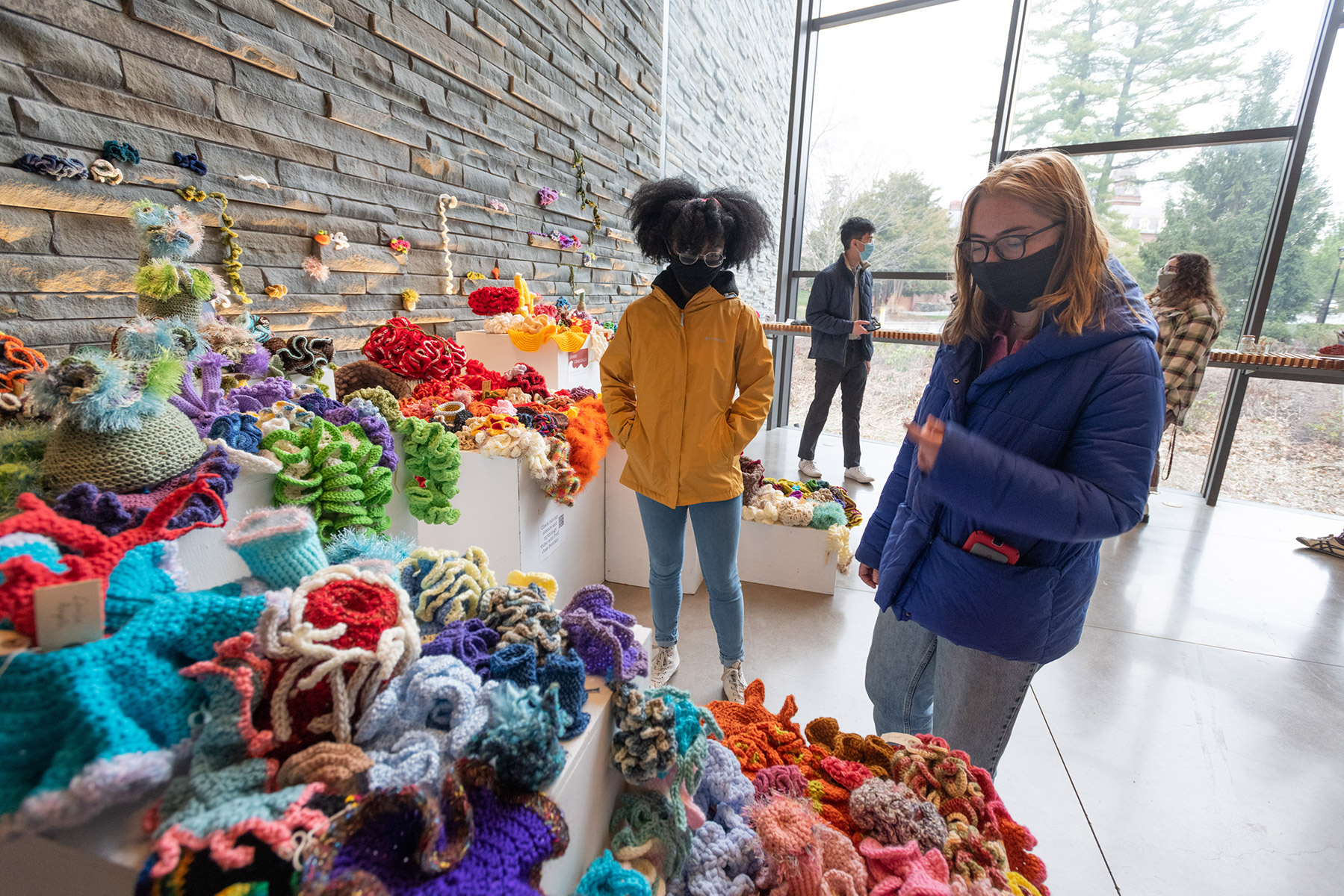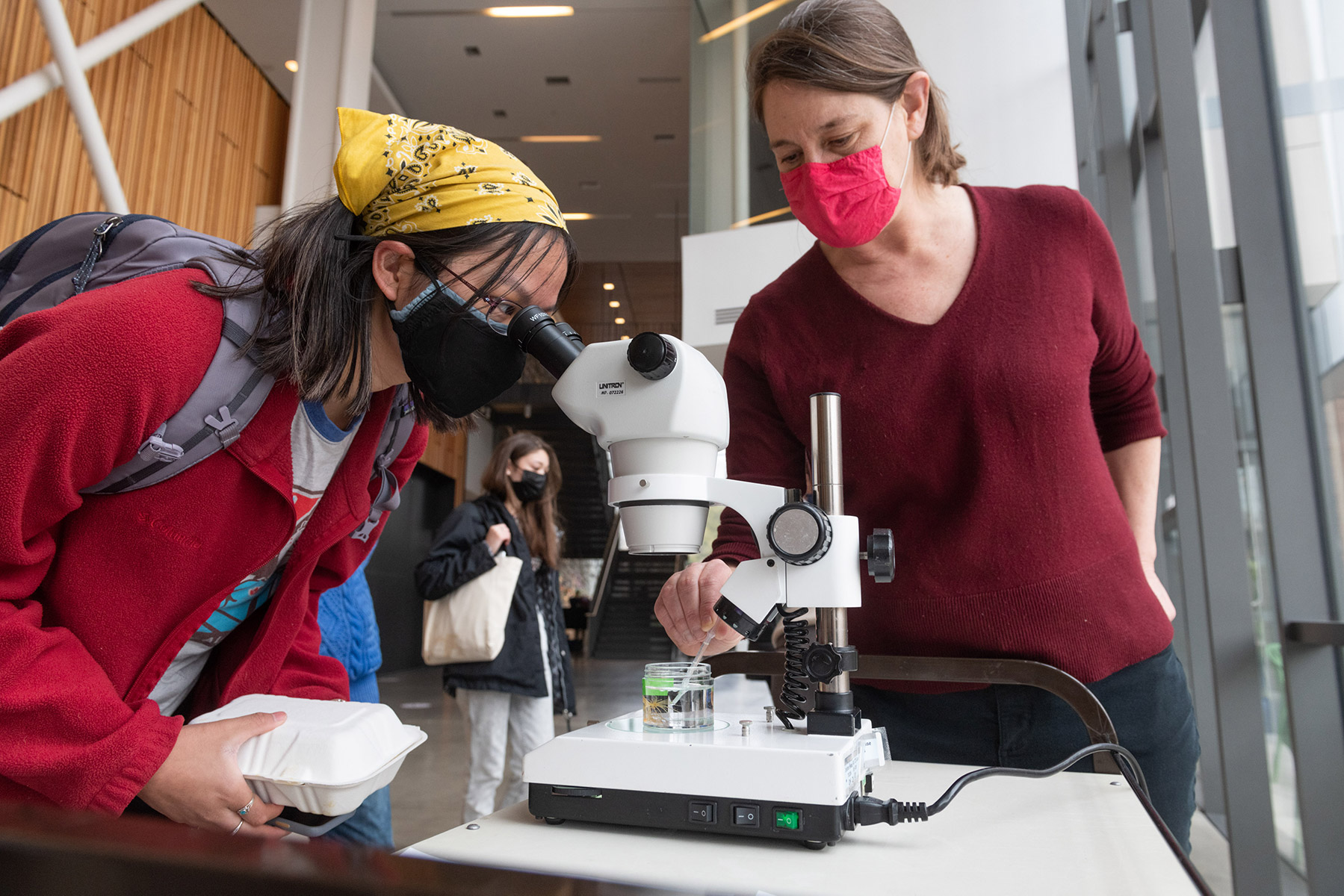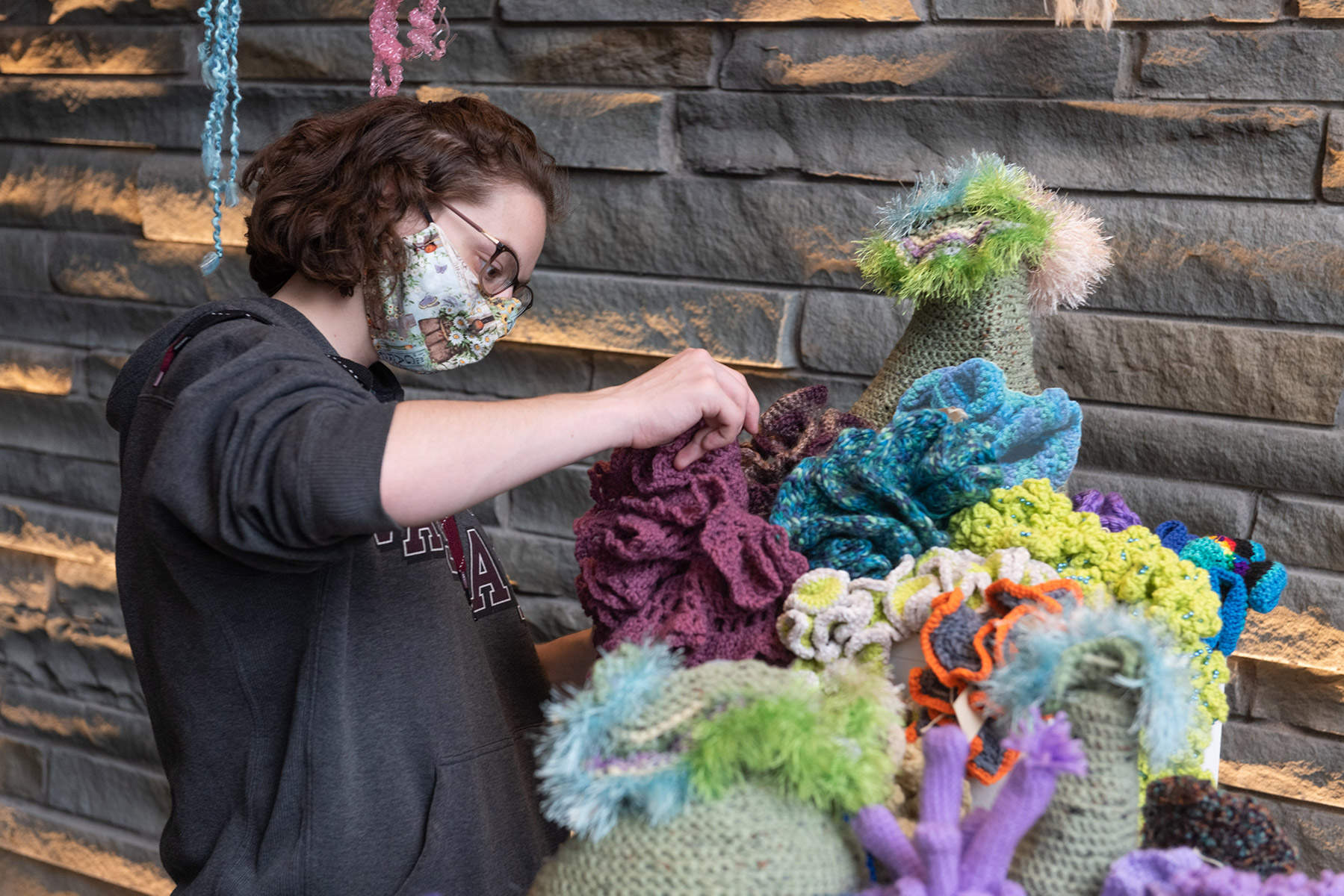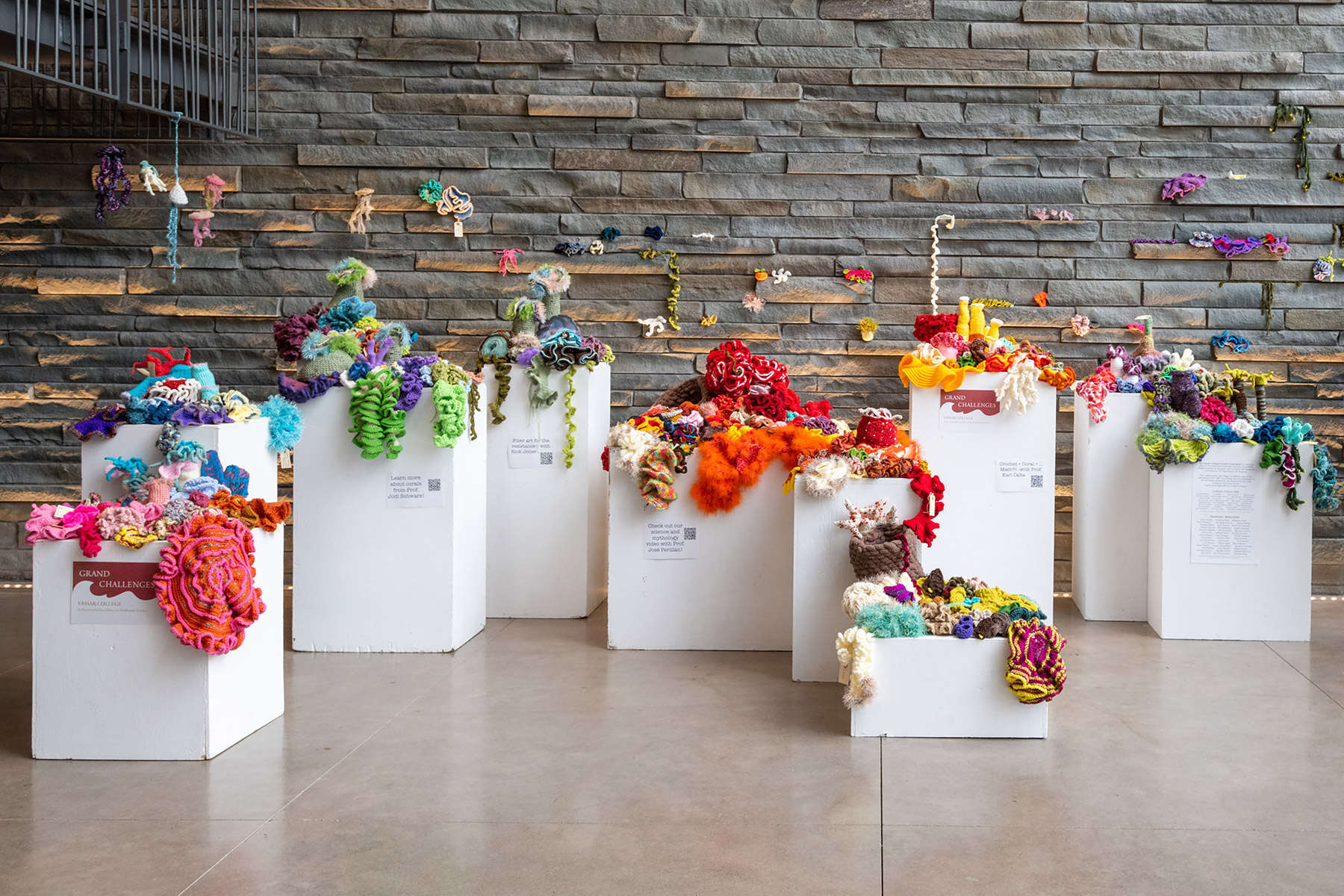Crocheted “Reef” ProjectBuilding Community While Teaching about Endangered Marine Ecosystems
Crocheted “Reef” ProjectBuilding Community While Teaching about Endangered Marine Ecosystems
During a long, cold Winter Break in the midst of the pandemic, more than 50 Vassar students, faculty, and administrators gathered on Zoom to take part in the first ever Grand Challenges Winter Creative Project. Participants learned to crochet and used those skills to build a massive crocheted “coral reef” to demonstrate the need to address climate change.

Grand Challenges is a five-year program funded through the Howard Hughes Medical Institute to build capacity for inclusive excellence in the sciences. A major focus has been on building community across many dimensions of difference. This winter, the vision of the Creative Project was to support a community of science and art by bringing people together during a time of isolation.
The crochet coral project was conceived by members of the Grand Challenges team: environmental studies major Maya Pelletier ’22, an intern for the Grand Challenges Program and an avid knitter; Rick Jones, Vassar’s Earth Sciences Laboratory Coordinator and a longtime crochet enthusiast; Tom Pacio, Director of Creative Arts and Co-director of the Grand Challenges Program; and Jodi Schwarz, Associate Professor of Biology, Director of the Grand Challenges Program, and a newbie to crocheting.

In January, each participant received by mail a skein of yarn, a crochet hook, a link to tutorial videos, and an invitation to join a community forum on Slack that was moderated by Pelletier. Individually, each person created their own components of what became a massive “coral reef” erected in the main corridor of the Bridge for Laboratory Sciences. The crocheted pieces were not meant to be biologically accurate but were instead mathematical and artistic manifestations of the shapes and colors of the organisms that inhabit coral reefs.
Throughout the Winter Break, the crocheters took part in a series of “Zoominars”; they would come together to crochet while also hearing from professors and staff about the importance of coral reefs, the hyperbolic geometry of coral shapes, history of science, and fabric arts as a form of social protest.
Pelletier not only contributed some crocheted components for the coral reef but also helped organize the Zoominars. “During COVID we often felt disconnected from campus, but being able to do this over the break kept us connected with our professors,” Pelletier said. “As the pieces came in, we got to see the work people in California or Arizona or Maine or New York were doing for this project.”

One of those gifted artisans who took part in this year’s project was Chloe Chinnadurai ’22, a biology and science technology and society double major from Denville, NJ. “I learned crocheting in middle school, and I started doing it again recently as a stress reliever,” Chinnadurai said. “This project was an interaction of my crocheting and my interest in the research on coral reefs that Jodi has been doing. It was a great example of the kinds of interdisciplinary things Vassar is always doing.”
As Spring Semester commenced, the crocheters donated their creations to the collective, and hundreds of fuzzy, colorful, and evocative shapes came together in a dazzling reef. At the project’s unveiling in the Bridge Building for Laboratory Sciences during Spring Break, members of the campus community dropped in to learn about the role of coral reefs in helping scientists to monitor the effects of climate change.
Schwarz also brought living examples of healthy and bleached sea anemones, enabling visitors to learn how coral reefs are impacted by climate change. Corals depend on algal symbionts for their nutrition. When ocean temperatures rise, the symbiotic relationship breaks down and corals lose their source of nutrition. “Many first-year students expressed their excitement about getting to see and touch and learn about these fascinating organisms and their important function in maintaining healthy coral reefs,” she said.
Schwarz called the project a “magical” experience. “It exemplified one way to build a community that evolves as it works towards a shared goal,” she said. “We started with a desire to build community and a concern for coral reefs. By bringing together crochet enthusiasts, scientists, artists, activists, and people who were just generally curious, our project made space for diverse skills, perspectives, and knowledge.”
Jones noted that he and others at the College had participated in an early iteration of this reef 10 years ago when Vassar joined a worldwide initiative inspired by a crocheted coral reef project launched in 2005 by Australian environmental activists Margaret and Christine Wertheim. “I had been involved in that project,” Jones said, “and I knew Vassar students had a lot of skills most of us don’t know about, including knitting and crocheting.”
Pacio said the project exemplified the vision of Grand Challenges. “Everyone was welcome and encouraged to participate regardless of their prior knowledge or skill sets,” he said. “The process was open, inviting, and humble, and the result was a beautiful, tangible, and powerful example of community.”

About Grand Challenges
Funded in 2018 by a five-year, $1 million grant from the Howard Hughes Medical Institute, Vassar’s Grand Challenges initiative is designed to transform Vassar’s STEM curriculum by fostering and supporting a community of science that reflects the diversity of perspectives, skills, and knowledges of all our students and faculty. By supporting faculty in developing an inclusive classroom environment, and by providing students with a real-world issue that can be addressed by that discipline, these courses aim to help students feel connected to the science. Introductory-level courses include: General Chemistry, Calculus, Physics, Psychology, Economics, History, Sociology, and First Year Writing Seminars. At least five such courses are offered each semester.
The grant also funds a summer program called “Summer Catalyst Research Experience” in which students identify areas in which the College can build its capacity for inclusion, equity, and diversity. This year’s summer program will focus on “The First-Year STEM Experience.”